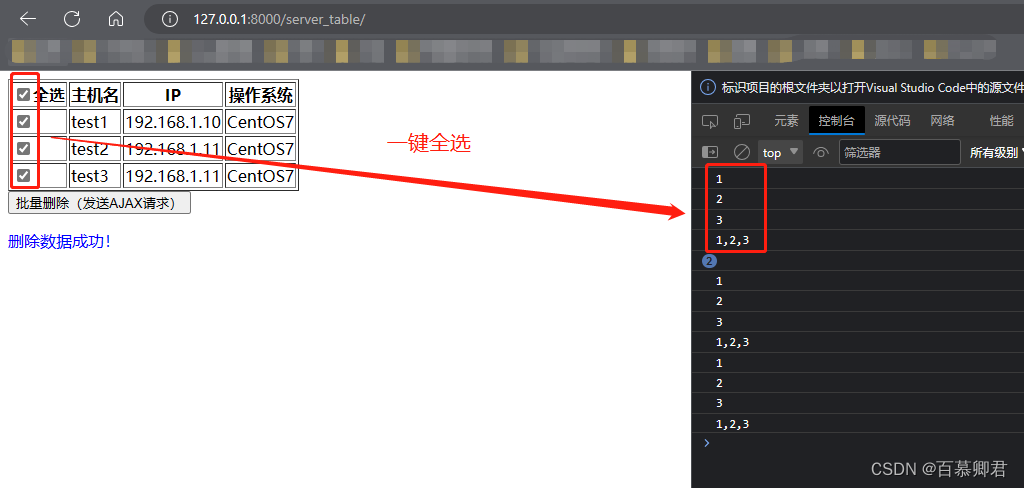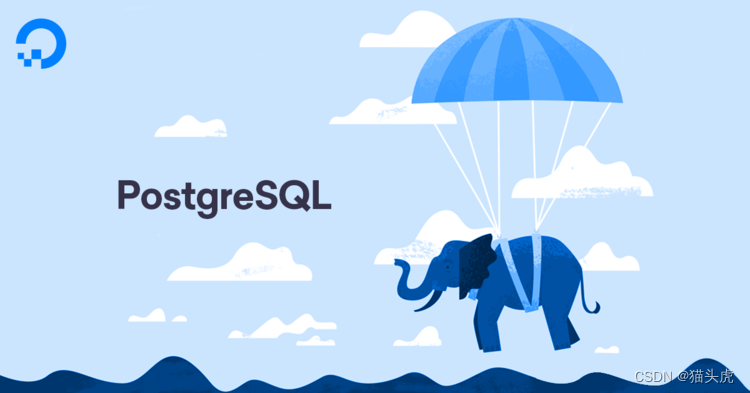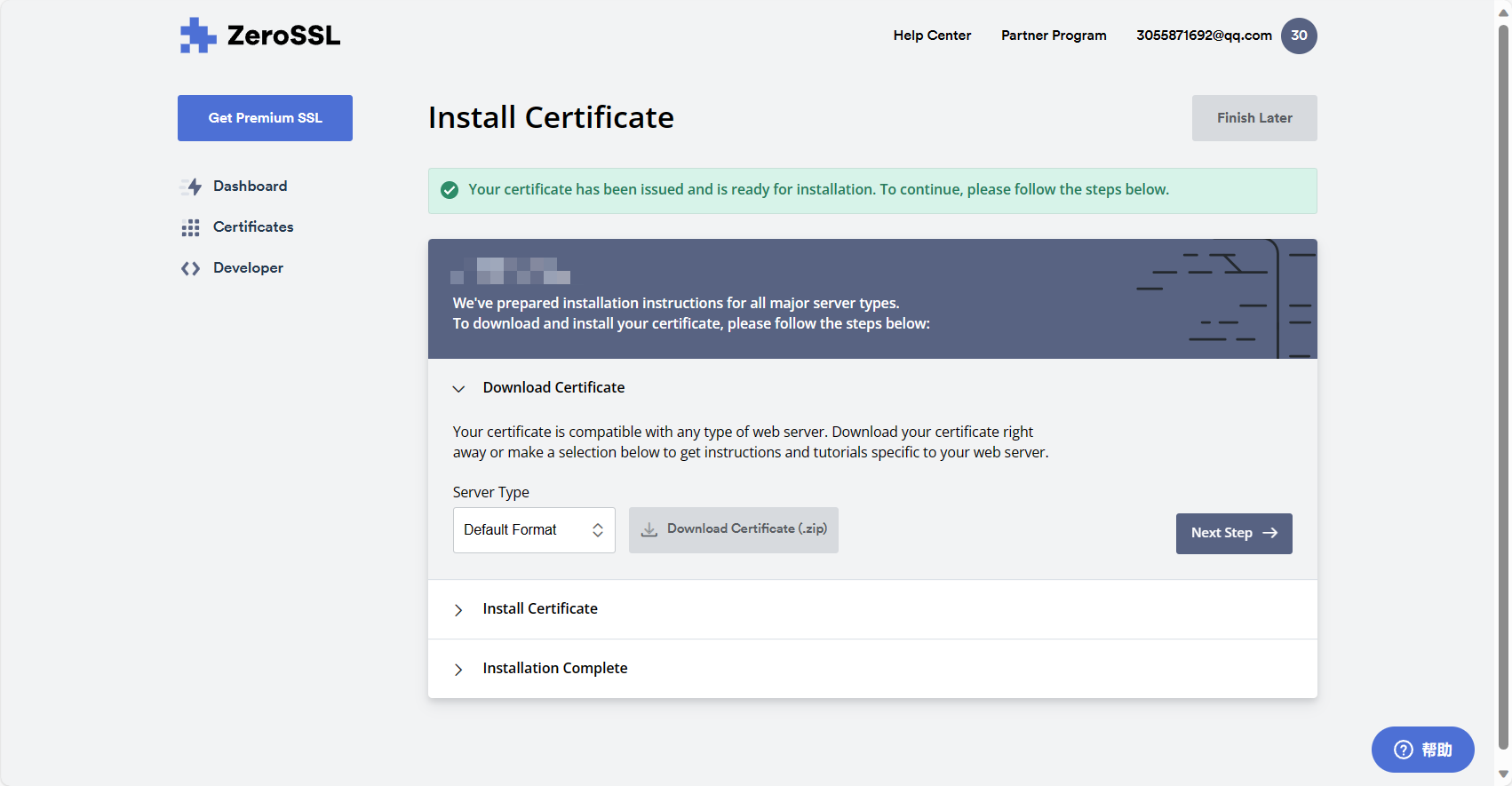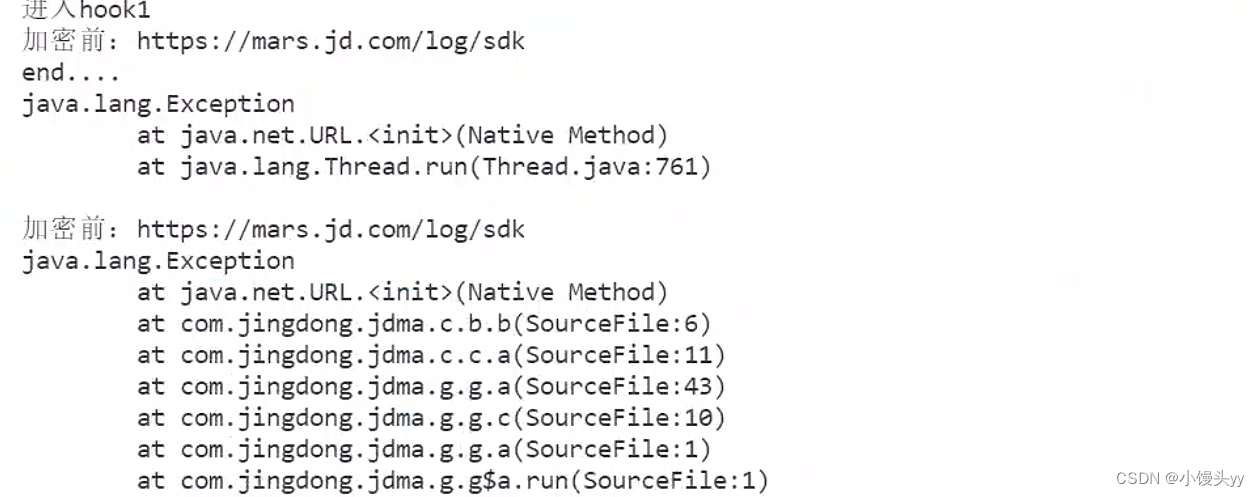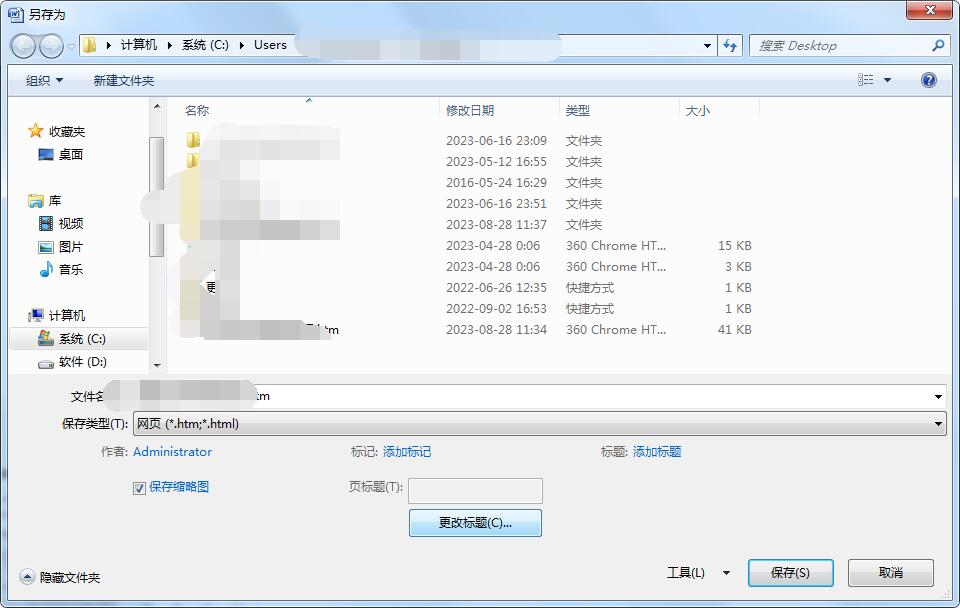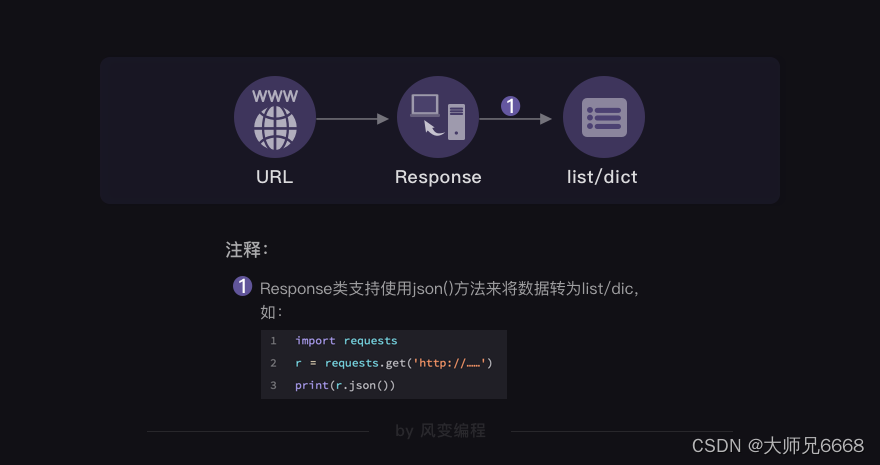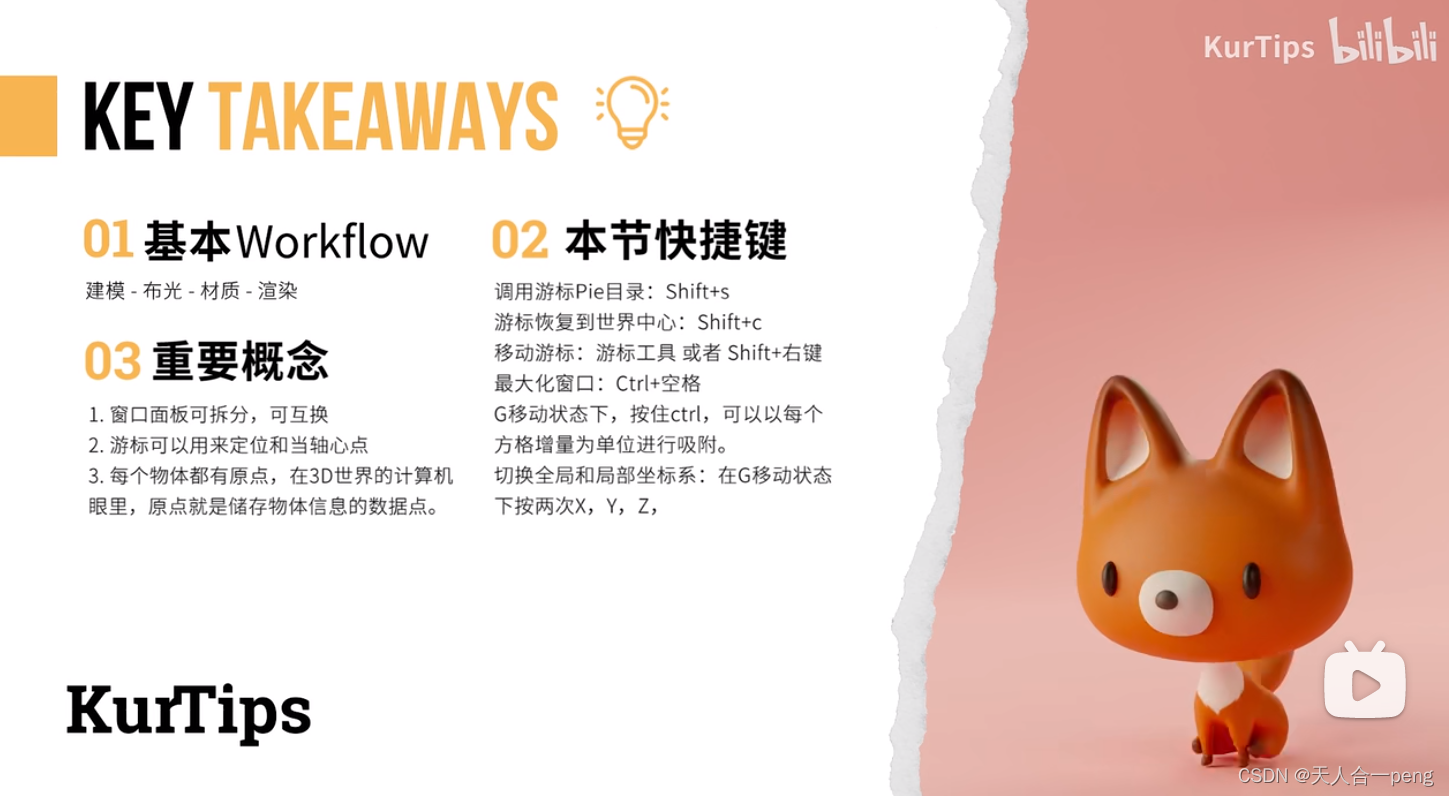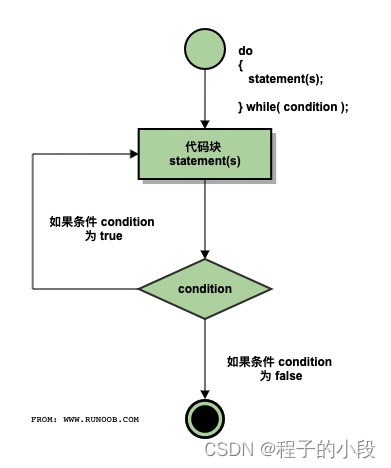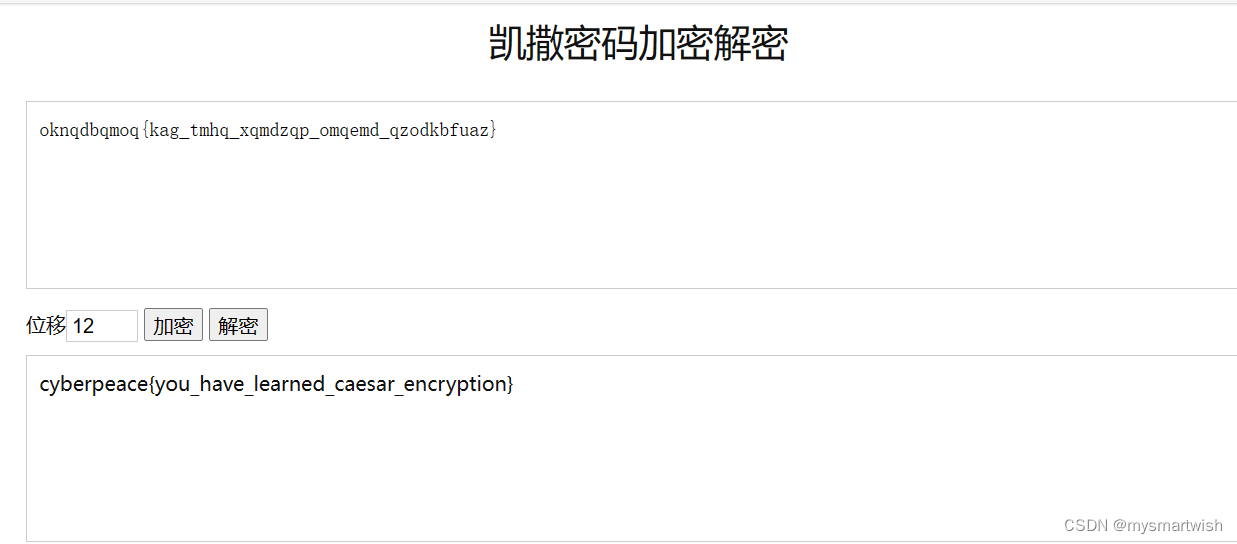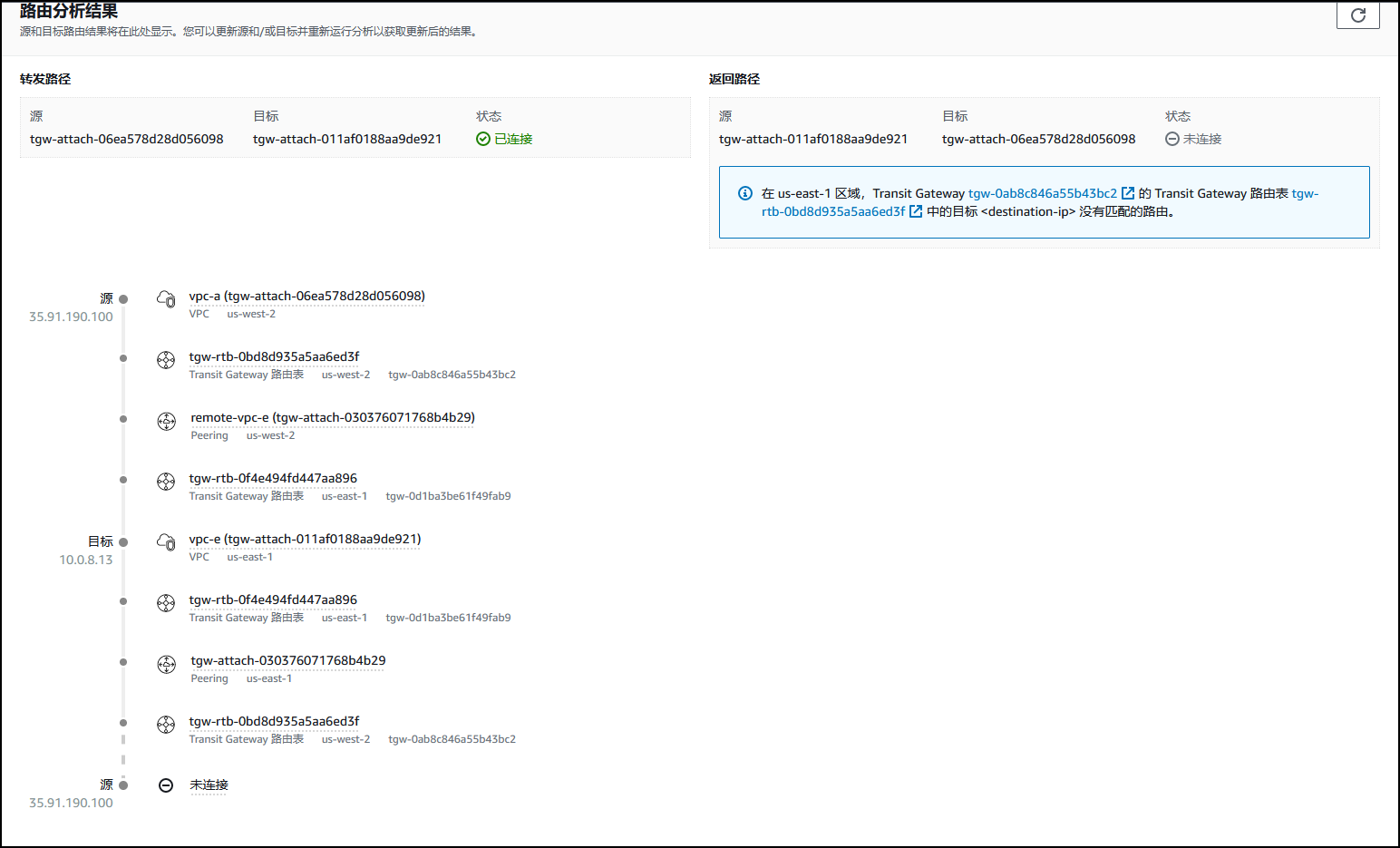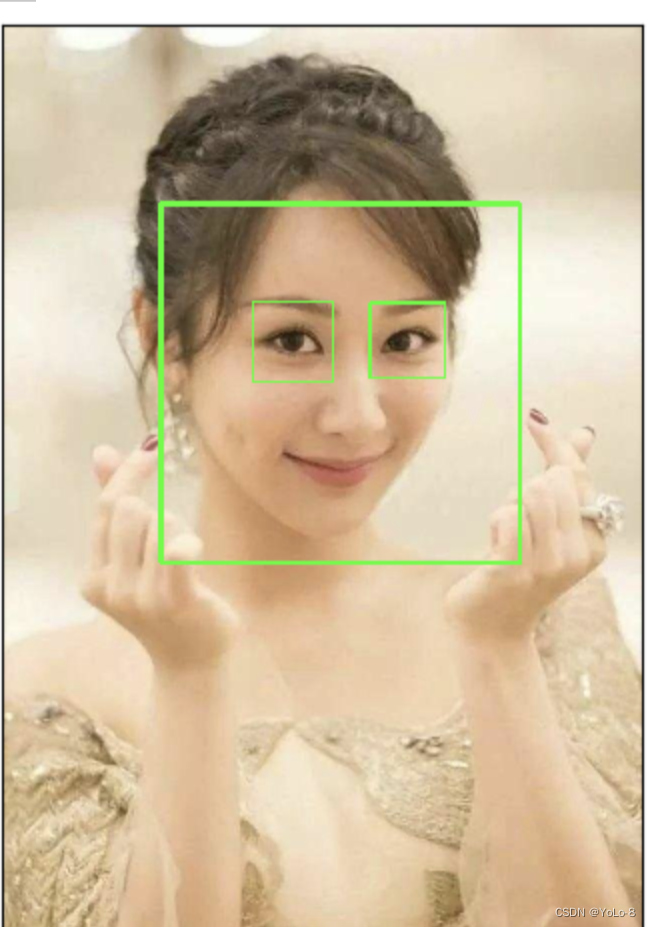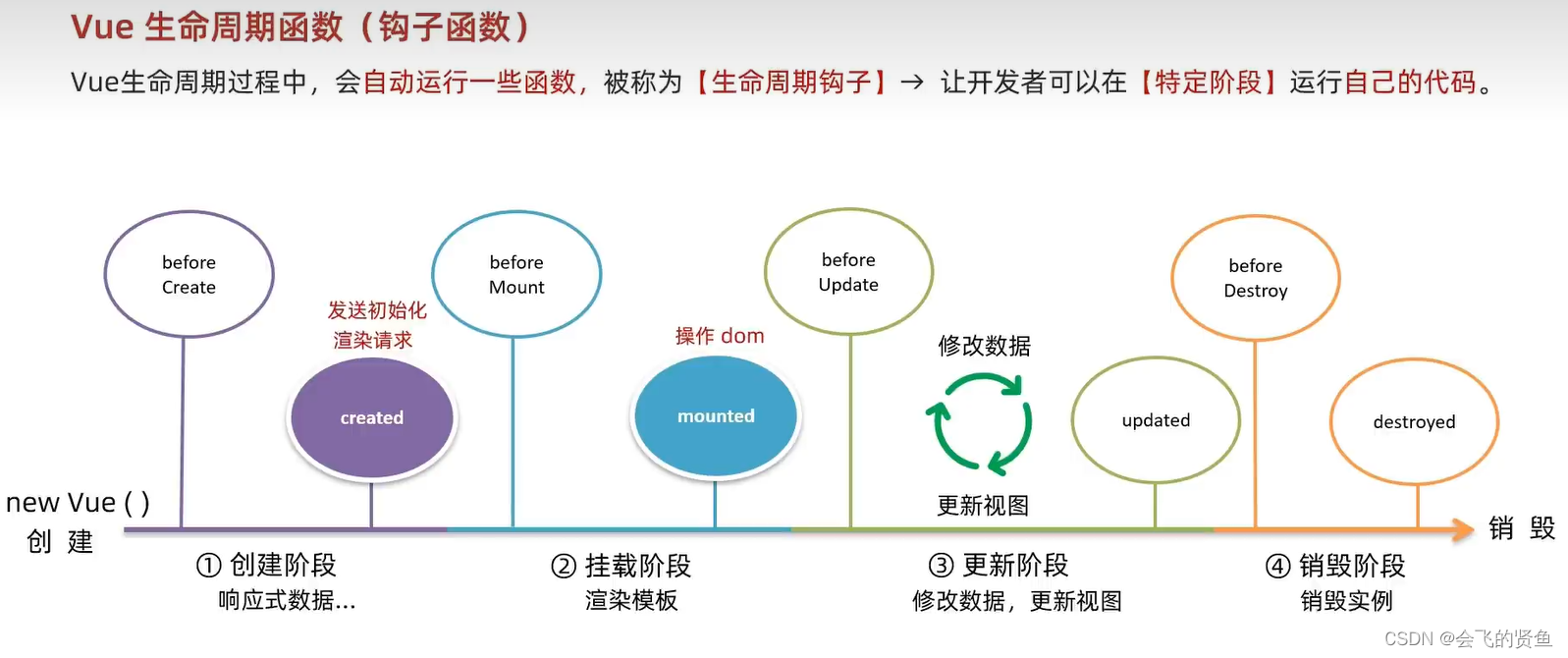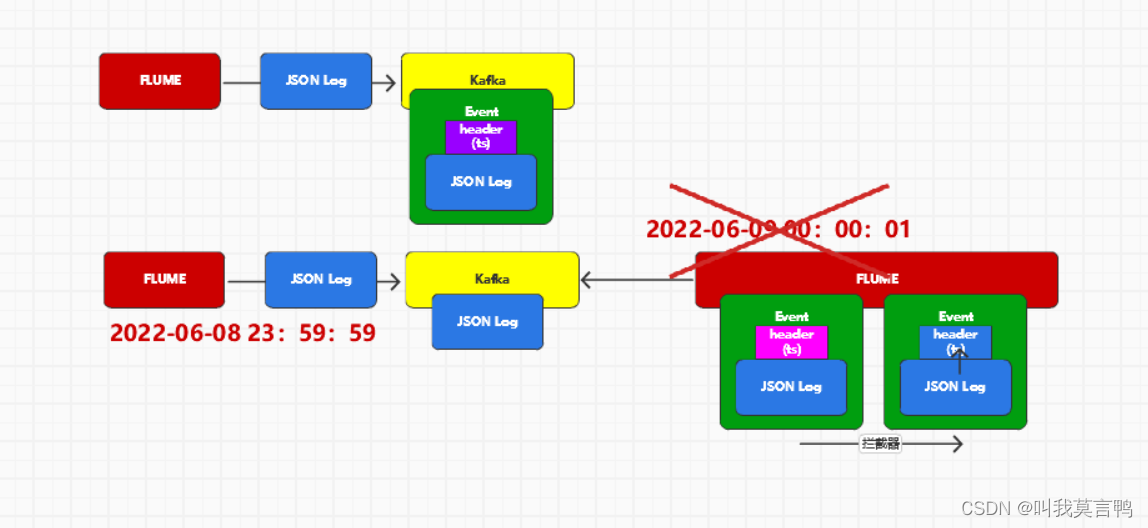回归 概念
假设现在有一些数据点,我们用一条直线对这些点进行拟合(这条直线称为最佳拟合直线),这个拟合的过程就叫做回归。进而可以得到对这些点的拟合直线方程。
最后结果用sigmoid函数输出
因此,为了实现 Logistic 回归分类器,我们可以在每个特征上都乘以一个回归系数(如下公式所示),然后把所有结果值相加,将这个总和代入 Sigmoid 函数中,进而得到一个范围在 0~1 之间的数值。任何大于 0.5 的数据被分入 1 类,小于 0.5 即被归入 0 类。所以,Logistic 回归也是一种概率估计,比如这里Sigmoid 函数得出的值为0.5,可以理解为给定数据和参数,数据被分入 1 类的概率为0.5
逻辑回归实际上就是一层神经网络
sigmoid函数的输入
梯度上升
梯度=梯度值+梯度方向
要找到某函数的最大值,最好的方法是沿着该函数的梯度方向探寻。如果梯度记为 ▽ ,则函数 f(x, y) 的梯度由下式表示:
上式表示要沿x的方向移动,沿y方向移动
。其中,函数f(x,y)必须要在待计算的点上有定义并且可微。
梯度下降和梯度上升:
其实这个两个方法在此情况下本质上是相同的。关键在于代价函数(cost function)或者叫目标函数(objective function)。如果目标函数是损失函数,那就是最小化损失函数来求函数的最小值,就用梯度下降。 如果目标函数是似然函数(Likelihood function),就是要最大化似然函数来求函数的最大值,那就用梯度上升。在逻辑回归中, 损失函数和似然函数无非就是互为正负关系。
只需要在迭代公式中的加法变成减法。因此,对应的公式可以写成
from __future__ import print_function
from numpy import *
import matplotlib.pyplot as plt
# ---------------------------------------------------------------------------
# 使用 Logistic 回归在简单数据集上的分类
# 解析数据
def loadDataSet(file_name):
'''
Desc:
加载并解析数据
Args:
file_name -- 文件名称,要解析的文件所在磁盘位置
Returns:
dataMat -- 原始数据的特征
labelMat -- 原始数据的标签,也就是每条样本对应的类别
'''
# dataMat为原始数据, labelMat为原始数据的标签
dataMat = []
labelMat = []
fr = open(file_name)
for line in fr.readlines():
lineArr = line.strip().split()
if len(lineArr) == 1:
continue # 这里如果就一个空的元素,则跳过本次循环
# 为了方便计算,我们将 X0 的值设为 1.0 ,也就是在每一行的开头添加一个 1.0 作为 X0
dataMat.append([1.0, float(lineArr[0]), float(lineArr[1])])
labelMat.append(int(lineArr[2]))
return dataMat, labelMat
# sigmoid跳跃函数
def sigmoid(inX):
# return 1.0 / (1 + exp(-inX))
# Tanh是Sigmoid的变形,与 sigmoid 不同的是,tanh 是0均值的。因此,实际应用中,tanh 会比 sigmoid 更好。
return 2 * 1.0/(1+exp(-2*inX)) - 1
# 正常的处理方案
# 两个参数: 第一个参数==> dataMatIn 是一个2维NumPy数组,每列分别代表每个不同的特征,每行则代表每个训练样本。
# 第二个参数==> classLabels 是类别标签,它是一个 1*100 的行向量。为了便于矩阵计算,需要将该行向量转换为列向量,做法是将原向量转置,再将它赋值给labelMat。
def gradAscent(dataMatIn, classLabels):
'''
Desc:
正常的梯度上升法
Args:
dataMatIn -- 输入的 数据的特征 List
classLabels -- 输入的数据的类别标签
Returns:
array(weights) -- 得到的最佳回归系数
'''
# 转化为矩阵[[1,1,2],[1,1,2]....]
dataMatrix = mat(dataMatIn) # 转换为 NumPy 矩阵
# 转化为矩阵[[0,1,0,1,0,1.....]],并转制[[0],[1],[0].....]
# transpose() 行列转置函数
# 将行向量转化为列向量 => 矩阵的转置
labelMat = mat(classLabels).transpose() # 首先将数组转换为 NumPy 矩阵,然后再将行向量转置为列向量
# m->数据量,样本数 n->特征数
m, n = shape(dataMatrix)
# print m, n, '__'*10, shape(dataMatrix.transpose()), '__'*100
# alpha代表向目标移动的步长
alpha = 0.001
# 迭代次数
maxCycles = 500
# 生成一个长度和特征数相同的矩阵,此处n为3 -> [[1],[1],[1]]
# weights 代表回归系数, 此处的 ones((n,1)) 创建一个长度和特征数相同的矩阵,其中的数全部都是 1
weights = ones((n, 1))
for k in range(maxCycles): # heavy on matrix operations
# m*3 的矩阵 * 3*1 的单位矩阵 = m*1的矩阵
# 那么乘上单位矩阵的意义,就代表: 通过公式得到的理论值
# 参考地址: 矩阵乘法的本质是什么? https://www.zhihu.com/question/21351965/answer/31050145
# print 'dataMatrix====', dataMatrix
# print 'weights====', weights
# n*3 * 3*1 = n*1
h = sigmoid(dataMatrix * weights) # 矩阵乘法
# print 'hhhhhhh====', h
# labelMat是实际值
error = (labelMat - h) # 向量相减
# 0.001* (3*m)*(m*1) 表示在每一个列上的一个误差情况,最后得出 x1,x2,xn的系数的偏移量
weights = weights + alpha * dataMatrix.transpose() * error # 矩阵乘法,最后得到回归系数
return array(weights)
# 随机梯度下降
# 梯度下降优化算法在每次更新数据集时都需要遍历整个数据集,计算复杂都较高
# 随机梯度下降一次只用一个样本点来更新回归系数
def stocGradAscent0(dataMatrix, classLabels):
'''
Desc:
随机梯度下降,只使用一个样本点来更新回归系数
Args:
dataMatrix -- 输入数据的数据特征(除去最后一列)
classLabels -- 输入数据的类别标签(最后一列数据)
Returns:
weights -- 得到的最佳回归系数
'''
m, n = shape(dataMatrix)
alpha = 0.01
# n*1的矩阵
# 函数ones创建一个全1的数组
weights = ones(n) # 初始化长度为n的数组,元素全部为 1
for i in range(m):
# sum(dataMatrix[i]*weights)为了求 f(x)的值, f(x)=a1*x1+b2*x2+..+nn*xn,此处求出的 h 是一个具体的数值,而不是一个矩阵
h = sigmoid(sum(dataMatrix[i] * weights))
# print 'dataMatrix[i]===', dataMatrix[i]
# 计算真实类别与预测类别之间的差值,然后按照该差值调整回归系数
error = classLabels[i] - h
# 0.01*(1*1)*(1*n)
# print weights, "*" * 10, dataMatrix[i], "*" * 10, error
weights = weights + alpha * error * dataMatrix[i]
return weights
# 随机梯度下降算法(随机化)
def stocGradAscent1(dataMatrix, classLabels, numIter=150):
'''
Desc:
改进版的随机梯度下降,使用随机的一个样本来更新回归系数
Args:
dataMatrix -- 输入数据的数据特征(除去最后一列数据)
classLabels -- 输入数据的类别标签(最后一列数据)
numIter=150 -- 迭代次数
Returns:
weights -- 得到的最佳回归系数
'''
m, n = shape(dataMatrix)
weights = ones(n) # 创建与列数相同的矩阵的系数矩阵,所有的元素都是1
# 随机梯度, 循环150,观察是否收敛
for j in range(numIter):
# [0, 1, 2 .. m-1]
dataIndex = range(m)
for i in range(m):
# i和j的不断增大,导致alpha的值不断减少,但是不为0
alpha = 4 / (
1.0 + j + i
) + 0.0001 # alpha 会随着迭代不断减小,但永远不会减小到0,因为后边还有一个常数项0.0001
# 随机产生一个 0~len()之间的一个值
# random.uniform(x, y) 方法将随机生成下一个实数,它在[x,y]范围内,x是这个范围内的最小值,y是这个范围内的最大值。
randIndex = int(random.uniform(0, len(dataIndex)))
# sum(dataMatrix[i]*weights)为了求 f(x)的值, f(x)=a1*x1+b2*x2+..+nn*xn
h = sigmoid(sum(dataMatrix[dataIndex[randIndex]] * weights))
error = classLabels[dataIndex[randIndex]] - h
# print weights, '__h=%s' % h, '__'*20, alpha, '__'*20, error, '__'*20, dataMatrix[randIndex]
weights = weights + alpha * error * dataMatrix[dataIndex[randIndex]]
del (dataIndex[randIndex])
return weights
# 可视化展示
def plotBestFit(dataArr, labelMat, weights):
'''
Desc:
将我们得到的数据可视化展示出来
Args:
dataArr:样本数据的特征
labelMat:样本数据的类别标签,即目标变量
weights:回归系数
Returns:
None
'''
n = shape(dataArr)[0]
xcord1 = []
ycord1 = []
xcord2 = []
ycord2 = []
for i in range(n):
if int(labelMat[i]) == 1:
xcord1.append(dataArr[i, 1])
ycord1.append(dataArr[i, 2])
else:
xcord2.append(dataArr[i, 1])
ycord2.append(dataArr[i, 2])
fig = plt.figure()
ax = fig.add_subplot(111)
ax.scatter(xcord1, ycord1, s=30, c='red', marker='s')
ax.scatter(xcord2, ycord2, s=30, c='green')
x = arange(-3.0, 3.0, 0.1)
"""
y的由来,卧槽,是不是没看懂?
首先理论上是这个样子的。
dataMat.append([1.0, float(lineArr[0]), float(lineArr[1])])
w0*x0+w1*x1+w2*x2=f(x)
x0最开始就设置为1叻, x2就是我们画图的y值,而f(x)被我们磨合误差给算到w0,w1,w2身上去了
所以: w0+w1*x+w2*y=0 => y = (-w0-w1*x)/w2
"""
y = (-weights[0] - weights[1] * x) / weights[2]
ax.plot(x, y)
plt.xlabel('X')
plt.ylabel('Y')
plt.show()
def simpleTest():
# 1.收集并准备数据
dataMat, labelMat = loadDataSet("data/5.Logistic/TestSet.txt")
# print dataMat, '---\n', labelMat
# 2.训练模型, f(x)=a1*x1+b2*x2+..+nn*xn中 (a1,b2, .., nn).T的矩阵值
# 因为数组没有是复制n份, array的乘法就是乘法
dataArr = array(dataMat)
# print dataArr
# weights = gradAscent(dataArr, labelMat)
# weights = stocGradAscent0(dataArr, labelMat)
weights = stocGradAscent1(dataArr, labelMat)
# print '*'*30, weights
# 数据可视化
plotBestFit(dataArr, labelMat, weights)# --------------------------------------------------------------------------------
# 从疝气病症预测病马的死亡率
# 分类函数,根据回归系数和特征向量来计算 Sigmoid的值
def classifyVector(inX, weights):
'''
Desc:
最终的分类函数,根据回归系数和特征向量来计算 Sigmoid 的值,大于0.5函数返回1,否则返回0
Args:
inX -- 特征向量,features
weights -- 根据梯度下降/随机梯度下降 计算得到的回归系数
Returns:
如果 prob 计算大于 0.5 函数返回 1
否则返回 0
'''
prob = sigmoid(sum(inX * weights))
if prob > 0.5: return 1.0
else: return 0.0
# 打开测试集和训练集,并对数据进行格式化处理
def colicTest():
'''
Desc:
打开测试集和训练集,并对数据进行格式化处理
Args:
None
Returns:
errorRate -- 分类错误率
'''
frTrain = open('data/5.Logistic/horseColicTraining.txt')
frTest = open('data/5.Logistic/horseColicTest.txt')
trainingSet = []
trainingLabels = []
# 解析训练数据集中的数据特征和Labels
# trainingSet 中存储训练数据集的特征,trainingLabels 存储训练数据集的样本对应的分类标签
for line in frTrain.readlines():
currLine = line.strip().split('\t')
lineArr = []
for i in range(21):
lineArr.append(float(currLine[i]))
trainingSet.append(lineArr)
trainingLabels.append(float(currLine[21]))
# 使用 改进后的 随机梯度下降算法 求得在此数据集上的最佳回归系数 trainWeights
trainWeights = stocGradAscent1(array(trainingSet), trainingLabels, 500)
# trainWeights = stocGradAscent0(array(trainingSet), trainingLabels)
errorCount = 0
numTestVec = 0.0
# 读取 测试数据集 进行测试,计算分类错误的样本条数和最终的错误率
for line in frTest.readlines():
numTestVec += 1.0
currLine = line.strip().split('\t')
lineArr = []
for i in range(21):
lineArr.append(float(currLine[i]))
if int(classifyVector(array(lineArr), trainWeights)) != int(
currLine[21]):
errorCount += 1
errorRate = (float(errorCount) / numTestVec)
print("the error rate of this test is: %f" % errorRate)
return errorRate
# 调用 colicTest() 10次并求结果的平均值
def multiTest():
numTests = 10
errorSum = 0.0
for k in range(numTests):
errorSum += colicTest()
print("after %d iterations the average error rate is: %f" % (numTests, errorSum / float(numTests)))
simpleTest()
# multiTest()
# 逻辑回归中的 L1 惩罚和稀缺性 L1 Penalty and Sparsity in Logistic Regression
print(__doc__)
import numpy as np
import matplotlib.pyplot as plt
from sklearn.linear_model import LogisticRegression
from sklearn import datasets
from sklearn.preprocessing import StandardScaler
digits = datasets.load_digits()
X, y = digits.data, digits.target
X = StandardScaler().fit_transform(X)
# 将大小数字分类为小
y = (y > 4).astype(np.int)
# 设置正则化参数
for i, C in enumerate((100, 1, 0.01)):
# 减少训练时间短的容忍度
clf_l1_LR = LogisticRegression(C=C, penalty='l1', tol=0.01)
clf_l2_LR = LogisticRegression(C=C, penalty='l2', tol=0.01)
clf_l1_LR.fit(X, y)
clf_l2_LR.fit(X, y)
coef_l1_LR = clf_l1_LR.coef_.ravel()
coef_l2_LR = clf_l2_LR.coef_.ravel()
# coef_l1_LR contains zeros due to the
# L1 sparsity inducing norm
# 由于 L1 稀疏诱导规范,coef_l1_LR 包含零
sparsity_l1_LR = np.mean(coef_l1_LR == 0) * 100
sparsity_l2_LR = np.mean(coef_l2_LR == 0) * 100
print("C=%.2f" % C)
print("Sparsity with L1 penalty: %.2f%%" % sparsity_l1_LR)
print("score with L1 penalty: %.4f" % clf_l1_LR.score(X, y))
print("Sparsity with L2 penalty: %.2f%%" % sparsity_l2_LR)
print("score with L2 penalty: %.4f" % clf_l2_LR.score(X, y))
l1_plot = plt.subplot(3, 2, 2 * i + 1)
l2_plot = plt.subplot(3, 2, 2 * (i + 1))
if i == 0:
l1_plot.set_title("L1 penalty")
l2_plot.set_title("L2 penalty")
l1_plot.imshow(np.abs(coef_l1_LR.reshape(8, 8)), interpolation='nearest',
cmap='binary', vmax=1, vmin=0)
l2_plot.imshow(np.abs(coef_l2_LR.reshape(8, 8)), interpolation='nearest',
cmap='binary', vmax=1, vmin=0)
plt.text(-8, 3, "C = %.2f" % C)
l1_plot.set_xticks(())
l1_plot.set_yticks(())
l2_plot.set_xticks(())
l2_plot.set_yticks(())
plt.show()
# 具有 L1-逻辑回归的路径
from datetime import datetime
import numpy as np
import matplotlib.pyplot as plt
from sklearn import linear_model
from sklearn import datasets
from sklearn.svm import l1_min_c
iris = datasets.load_iris()
X = iris.data
y = iris.target
X = X[y != 2]
y = y[y != 2]
X -= np.mean(X, 0)
cs = l1_min_c(X, y, loss='log') * np.logspace(0, 3)
print("Computing regularization path ...")
start = datetime.now()
clf = linear_model.LogisticRegression(C=1.0, penalty='l1', tol=1e-6)
coefs_ = []
for c in cs:
clf.set_params(C=c)
clf.fit(X, y)
coefs_.append(clf.coef_.ravel().copy())
print("This took ", datetime.now() - start)
coefs_ = np.array(coefs_)
plt.plot(np.log10(cs), coefs_)
ymin, ymax = plt.ylim()
plt.xlabel('log(C)')
plt.ylabel('Coefficients')
plt.title('Logistic Regression Path')
plt.axis('tight')
plt.show()
# 绘制多项式和一对二的逻辑回归 Plot multinomial and One-vs-Rest Logistic Regression
print(__doc__)
import numpy as np
import matplotlib.pyplot as plt
from sklearn.datasets import make_blobs
from sklearn.linear_model import LogisticRegression
# 制作 3 类数据集进行分类
centers = [[-5, 0], [0, 1.5], [5, -1]]
X, y = make_blobs(n_samples=1000, centers=centers, random_state=40)
transformation = [[0.4, 0.2], [-0.4, 1.2]]
X = np.dot(X, transformation)
for multi_class in ('multinomial', 'ovr'):
clf = LogisticRegression(solver='sag', max_iter=100, random_state=42,
multi_class=multi_class).fit(X, y)
# 打印训练分数
print("training score : %.3f (%s)" % (clf.score(X, y), multi_class))
# 创建一个网格来绘制
h = .02 # 网格中的步长
x_min, x_max = X[:, 0].min() - 1, X[:, 0].max() + 1
y_min, y_max = X[:, 1].min() - 1, X[:, 1].max() + 1
xx, yy = np.meshgrid(np.arange(x_min, x_max, h),
np.arange(y_min, y_max, h))
# 绘制决策边界。为此,我们将为网格 [x_min, x_max]x[y_min, y_max]中的每个点分配一个颜色。
Z = clf.predict(np.c_[xx.ravel(), yy.ravel()])
# 将结果放入彩色图
Z = Z.reshape(xx.shape)
plt.figure()
plt.contourf(xx, yy, Z, cmap=plt.cm.Paired)
plt.title("Decision surface of LogisticRegression (%s)" % multi_class)
plt.axis('tight')
# 将训练点也绘制进入
colors = "bry"
for i, color in zip(clf.classes_, colors):
idx = np.where(y == i)
plt.scatter(X[idx, 0], X[idx, 1], c=color, cmap=plt.cm.Paired)
# 绘制三个一对数分类器
xmin, xmax = plt.xlim()
ymin, ymax = plt.ylim()
coef = clf.coef_
intercept = clf.intercept_
def plot_hyperplane(c, color):
def line(x0):
return (-(x0 * coef[c, 0]) - intercept[c]) / coef[c, 1]
plt.plot([xmin, xmax], [line(xmin), line(xmax)],
ls="--", color=color)
for i, color in zip(clf.classes_, colors):
plot_hyperplane(i, color)
plt.show()
from __future__ import print_function
# Logistic Regression 3-class Classifier 逻辑回归 3-类 分类器
print(__doc__)
import numpy as np
import matplotlib.pyplot as plt
from sklearn import linear_model, datasets
# 引入一些数据来玩
iris = datasets.load_iris()
# 我们只采用样本数据的前两个feature
X = iris.data[:, :2]
Y = iris.target
h = .02 # 网格中的步长
logreg = linear_model.LogisticRegression(C=1e5)
# 我们创建了一个 Neighbours Classifier 的实例,并拟合数据。
logreg.fit(X, Y)
# 绘制决策边界。为此我们将为网格 [x_min, x_max]x[y_min, y_max] 中的每个点分配一个颜色。
x_min, x_max = X[:, 0].min() - .5, X[:, 0].max() + .5
y_min, y_max = X[:, 1].min() - .5, X[:, 1].max() + .5
xx, yy = np.meshgrid(np.arange(x_min, x_max, h), np.arange(y_min, y_max, h))
Z = logreg.predict(np.c_[xx.ravel(), yy.ravel()])
# 将结果放入彩色图中
Z = Z.reshape(xx.shape)
plt.figure(1, figsize=(4, 3))
plt.pcolormesh(xx, yy, Z, cmap=plt.cm.Paired)
# 将训练点也同样放入彩色图中
plt.scatter(X[:, 0], X[:, 1], c=Y, edgecolors='k', cmap=plt.cm.Paired)
plt.xlabel('Sepal length')
plt.ylabel('Sepal width')
plt.xlim(xx.min(), xx.max())
plt.ylim(yy.min(), yy.max())
plt.xticks(())
plt.yticks(())
plt.show()
# Logistic function 逻辑回归函数
# 这个类似于咱们之前讲解 logistic 回归的 Sigmoid 函数,模拟的阶跃函数
print(__doc__)
import numpy as np
import matplotlib.pyplot as plt
from sklearn import linear_model
# 这是我们的测试集,它只是一条直线,带有一些高斯噪声。
xmin, xmax = -5, 5
n_samples = 100
np.random.seed(0)
X = np.random.normal(size=n_samples)
y = (X > 0).astype(np.float)
X[X > 0] *= 4
X += .3 * np.random.normal(size=n_samples)
X = X[:, np.newaxis]
# 运行分类器
clf = linear_model.LogisticRegression(C=1e5)
clf.fit(X, y)
# 并且画出我们的结果
plt.figure(1, figsize=(4, 3))
plt.clf()
plt.scatter(X.ravel(), y, color='black', zorder=20)
X_test = np.linspace(-5, 10, 300)
def model(x):
return 1 / (1 + np.exp(-x))
loss = model(X_test * clf.coef_ + clf.intercept_).ravel()
plt.plot(X_test, loss, color='red', linewidth=3)
ols = linear_model.LinearRegression()
ols.fit(X, y)
plt.plot(X_test, ols.coef_ * X_test + ols.intercept_, linewidth=1)
plt.axhline(.5, color='.5')
plt.ylabel('y')
plt.xlabel('X')
plt.xticks(range(-5, 10))
plt.yticks([0, 0.5, 1])
plt.ylim(-.25, 1.25)
plt.xlim(-4, 10)
plt.legend(('Logistic Regression Model', 'Linear Regression Model'),
loc="lower right", fontsize='small')
plt.show()